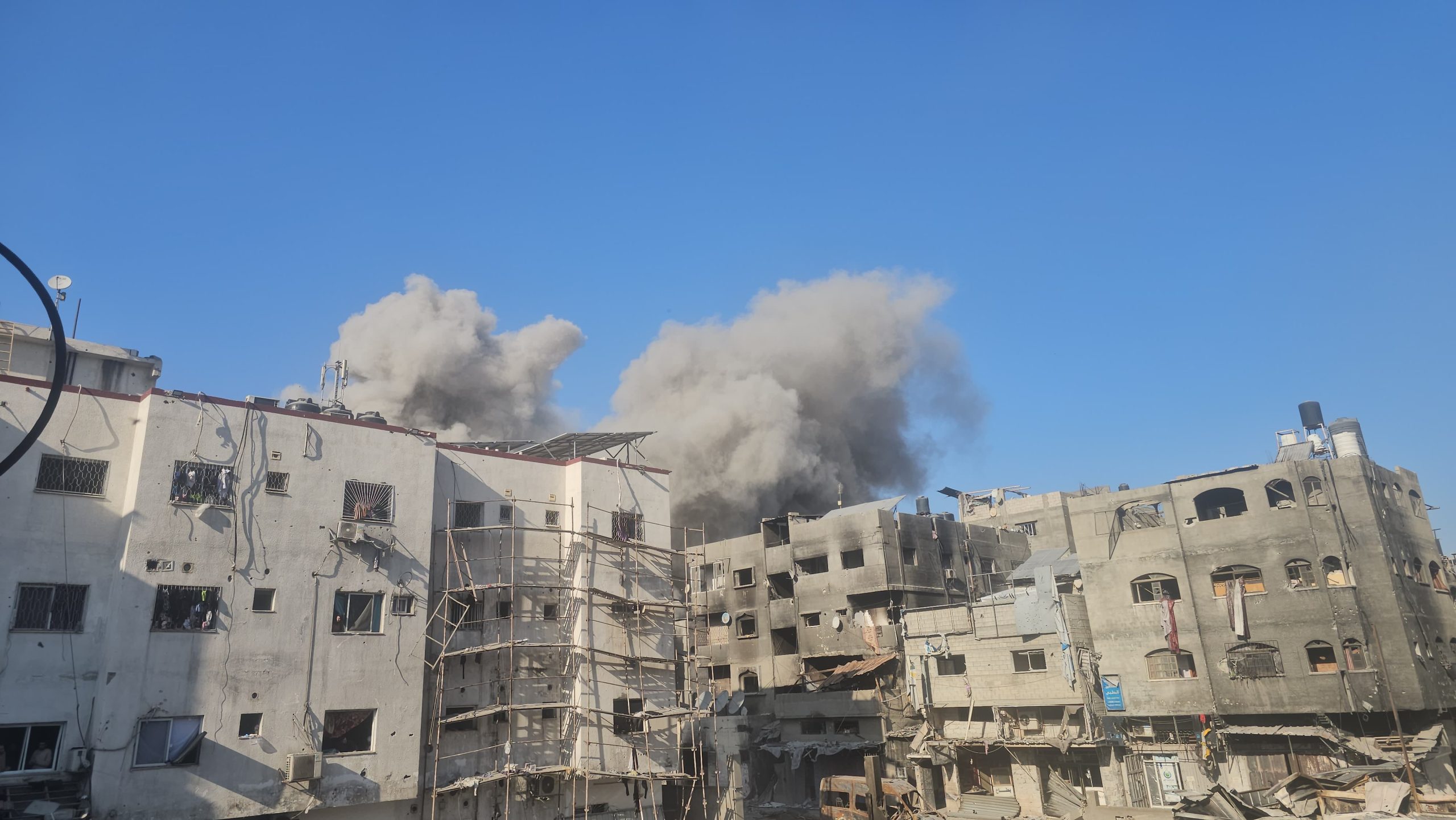
With reporting from Riham Sheble
Air pollution levels in the Middle East have “zero” effect on the health of residents, Qatar’s environment ministry has said in response to a recent report by the World Health Organization (WHO).
The study, Ambient air pollution: A global assessment of exposure and burden of disease, analyzed the effect of outside air pollution on residents’ health in 103 countries.
It included data that showed Qatar has the second highest average levels of PM2.5 particles in its air, behind Saudi Arabia.
According to the report:
“Small particle pollution has health impacts even at very low concentrations – indeed no threshold has been identified below which no damage to health is observed.”
However, the Ministry of Municipality and Environment (MME) said this week that “nothing” in the report “correlates air quality and its effect on health and mortality rates” in Qatar.
The MME said that it was issuing its statement in response to stories “circulating across social media networks” about the report.
Health impact
According to WHO’s data, there are few pollution-linked deaths in Qatar.
Additionally, the number of years lost due to ill-health, disability or early death after exposure to air pollution in Qatar are in the middle range of all countries listed – not the bottom.
Based on this, the MME said that poor quality air has “zero impact” on the health of Qatar residents.

It remains unclear why Qatar’s high pollution levels don’t correlate to high levels of early death and/or disease.
However, it’s possible the country’s PM2.5 particles are less harmful than those found elsewhere in the world because they are partly formed in the desert.
In its statement, the MME emphasized this, saying:
“Environmental monitoring management indicates that the Middle East region has high rates of density in terms of dust spread, as a result of its nature, fast winds and vast desert spaces.”
Speaking to Doha News, WHO environmental specialist Dr. Annette Prüss-Ustün agreed that desert dust accounts for some of Qatar’s PM2.5 readings.

However, she added that the effects of desert dust on health remain “less well understood.”
And while the exact composition of the particles in Qatar’s air remains unknown, recent research suggested that only half of PM2.5 particles in the region come from the desert.
The other half are derived from industrial sources like car exhausts and factories.
‘Not air pollution’
The MME also said that the data shown in the report, which assessed average annual levels of PM2.5 particles, did not constitute “air pollution.”

But Prüss-Ustün disputed this, telling Doha News there is a definite link between particulate matter and air pollution.
“It is correct that what WHO is reporting is particulate matter,” she said this week.
“However particulate matter is an indicator of air pollution, actually the most widely used one, and is the best indicator for estimating health impacts.”
The WHO report’s authors said that they had chosen to focus primarily on PM2.5 particles as these are “highly relevant” in measuring the impact of pollution on health.
Rankings question
The MME also took issue with Qatar’s ranking as one of the most polluted countries in the world.
It pointed out that WHO’s report did not specifically rank countries by their levels of pollution.
This is true; in an FAQ accompanying its report, the WHO explained that its policy is not to assess nations in this way, because people within countries are “unevenly exposed to air pollution” depending on where they live.

However, data tables contained in the report clearly showed that Qatar’s PM2.5 reading is the second highest of all nations.
And an accompanying interactive map is designed so that readers can see at a glance which countries and regions are the most polluted.
No public data
The MME concluded by saying it has an “action plan” that has been in place since 2014.
This involved upgrading hardware and introducing 22 mobile air monitoring stations, in addition to three fixed stations across Qatar.
These stations allow the government to “follow up and monitor air quality.”
However, Qatar does not share any of this data with the public.
The MME has not responded to requests for comment. Here is its full statement:
بيان توضيحي من وزارة #البلدية_والبيئة بخصوص تقرير منظمة الصحة العالمية حول جودة وتلوث الهواء.#بيئة_قطر #قطر #Qatar pic.twitter.com/4FOGLa2tEX
— وزارة البلدية | Ministry Of Municipality (@albaladiya) October 9, 2016
Translation: An official at the Ministry of Municipality and Environment has made an announcement in response to what has been circulating across social media networks, regarding Qatar’s ranking among world countries in the field of air quality and pollution.
What was published on the World Health Organization’s website was a table showing the concentration levels of particulate matter in air levels, not air pollution. The countries’ rankings for air pollution were not released by the organization (but) were circulated by some parties via social media networks.
The ministry has also clarified that the updated table for the year 2016 concerning the concentration levels of fine particles in the air has revealed that the state of Qatar ranks 41st among countries when it comes to the concentration levels of particulate matter (dust).
The World Health Organization has also made it clear on its website that any ranking or comparison made between countries regarding air pollution should not be made acceptable, due to to differences in geographic location, time period, ways of measurement, population density and lack of sufficient and clear data.
The environmental sector – the environmental monitoring management – indicates that the Middle East region has high rates of density in terms of dust spread, as a result of its nature, fast winds and vast desert spaces.
There was also no indication in the recent report by the World Health Organization that correlates air quality and its effect on health and mortality rates, as the referred table shows the zero impact of dust on low mortality cases in the region.
The Ministry of Municipality and the Environment has devised an action plan since 2014 that includes upgrading hardware and means of monitoring fine particles and pollution to directly monitor air quality through the ministry’s monitoring stations.
These include three fixed and upgraded stations, and 22 environmental monitoring mobile stations spread across the country, in which its affiliates coordinate with to follow up and monitor air quality.
Thoughts?







